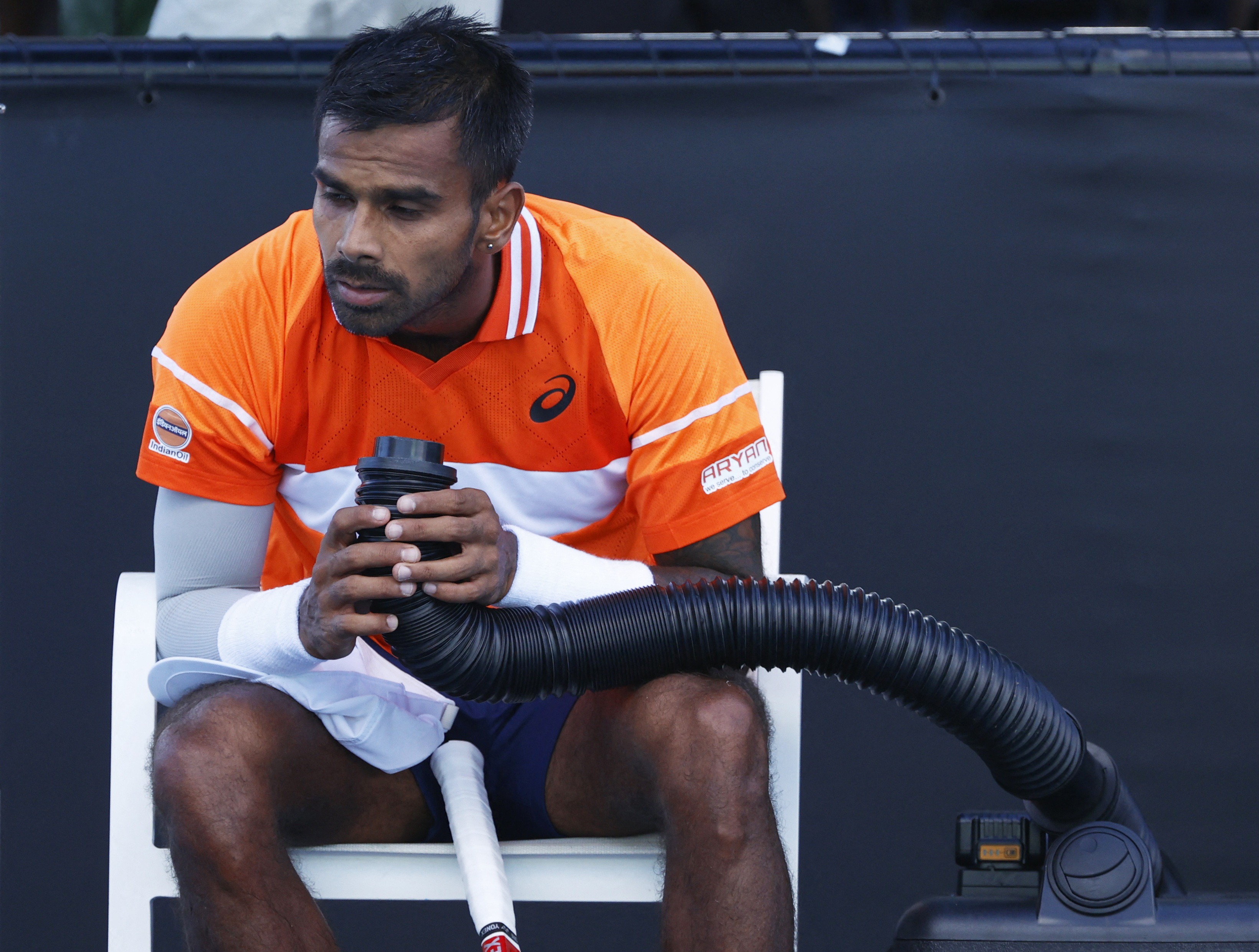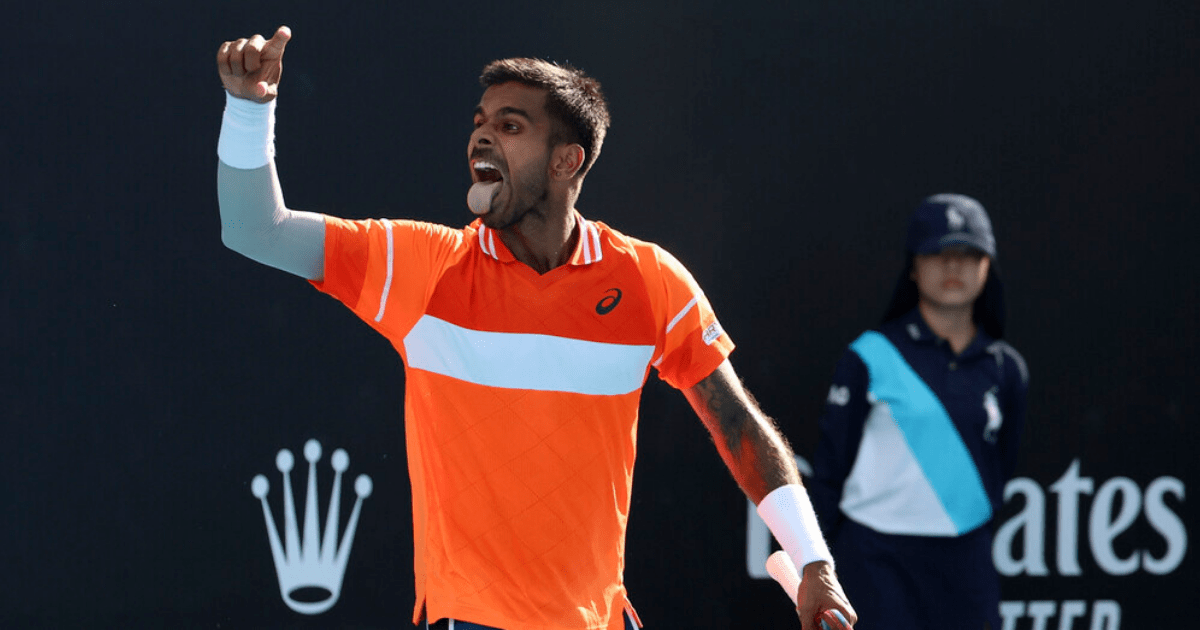Sumit Nagal, a professional tennis player from India, was facing financial ruin just four months ago with only £775 in his bank account. However, he has now secured a stunning victory at the Australian Open, guaranteeing himself a prize money of £94,100. This win is a major turning point for Nagal, who was ranked outside the world's top 500 just a year ago.
From Bankruptcy to Victory
Nagal's incredible journey began when he came through qualifying and defeated the No31 seed Alexander Bublik in the first round of the Australian Open. This victory not only secured him a substantial amount of prize money but also made him the first Indian tennis player, male or female, to win a singles match against a seeded player at a Grand Slam since 1989. Nagal's rise in the tennis world has been nothing short of remarkable.
A Financial Struggle
In September 2023, Nagal revealed in an interview that he had just £775 in his bank account. This sparked an outpouring of support, including a sponsorship deal with Gatorade and a one-off grant from the Delhi Lawn Tennis Association. Nagal expressed his gratitude for the financial help, highlighting the challenges faced by tennis players from India in terms of financial support and the expenses involved in traveling and competing in tournaments.
The Road to Redemption
Nagal's career had hit a low point when his ranking dropped due to injury. He admitted feeling lost and ready to give up. However, he persevered and managed to secure his seventh win against a top-100 player, as well as his second-best career win, at the Australian Open. The crowd cheered him on throughout the match, and Nagal couldn't contain his joy after realizing the magnitude of his victory.

Fans Show Their Support
Tennis fans were quick to shower Nagal with praise, calling his win historic and an inspiration to others pursuing careers in sports. Many expressed their admiration for his honesty and determination. Nagal's victory at the Australian Open has undoubtedly breathed new life into his career.
Looking Ahead
Nagal's success at the Australian Open has set the stage for further achievements. With his current world ranking of No137, he has a good chance of making it to the third round of a Grand Slam for the first time when he faces China's Juncheng Shang. Tennis enthusiasts will be eagerly watching Nagal's journey, rooting for his continued success.
Frequently Asked Questions
How can a tennis player balance school and intense training requirements?
The challenge of balancing the demands of academics and training is one that all tennis players face. The ability to manage time, prioritize, and create a schedule that works for you is essential. Online schooling and flexible academic programs can help accommodate the demanding training and travel schedule of young athletes. Families, coaches and educational institutions can also play a vital role in helping athletes achieve their athletic goals without compromising their studies.
How does mental and psycho-social training affect tennis training?
Tennis players must be mentally and psychologically fit. Tennis players must learn how to handle stress, focus and the emotional highs or lows that come with competition. Visualization, goal-setting and mental rehearsals can be common techniques. A sports psychologist helps players to build resilience, develop strategies for dealing with pressure and raise their mental game.
What role does videoanalysis play in the training of top tennis players
Video analysis can be a valuable tool to train and develop top tennis players. It allows a detailed analysis of opponent patterns, technique, and match play. Coaches and players utilize video analysis to dissect strokes, pinpoint areas for improvement, and strategize against future opponents. It helps identify tendencies and patterns which might be missed during a competition. This allows more targeted and efficient practices.
What kind of fitness training is essential for tennis players
Tennis is physically demanding and requires a mixture of aerobic endurance, strength and power. Tennis players’ fitness training often includes cardiovascular exercises to increase endurance, explosive and plyometric exercises to increase speed and power, strength training, and agility drills to improve footwork and court movement. Exercises that improve core stability and balance are essential to building the endurance and coordination needed for tennis.
How important is nutrition and diet to training as an elite tennis player
Tennis players are not exempt from the importance of nutrition and diet. The right diet supports intense training by providing energy, improving recovery and reducing injury risks. Diets for elite athletes usually include a mix of carbohydrates with proteins and fats. They also contain essential vitamins. Another important aspect is hydration, since maintaining a good fluid balance during play is essential to avoid fatigue and maintain focus.
Statistics
- Research indicates that junior tennis players who compete in international tournaments gain significant psychological advantage and experience, with participation leading to a 50% better transition into professional rankings.
- Studies show that superior agility and speed among tennis players can reduce their reaction time by up to 30%, which is crucial during high-level matches.
- Top tennis players typically train for 4 to 6 hours per day, divided between on-court practice and fitness training.
- Strength and conditioning coaches emphasize core strength, noting that an increase in core stability can improve shot accuracy by up to 43%.
- Persistent mental training and sports psychology can help reduce performance anxiety by up to 60%, according to sports psychologists working with elite athletes.
External Links
myprocoach.net
topendsports.com
wilsontennis.com
atptour.com
essentialtennis.com
How To
How to Recover From Tennis Workouts?
It is important to recover properly after an intense tennis session in order to avoid injury and prepare your body for future sessions. You can begin with a light cardio session to reduce your heartbeat. To promote flexibility, and to reduce muscle tightness, follow this up with static stretching. To reduce muscle soreness, use techniques like massage or foam rolling. It’s important to maintain hydration. Replace the fluids and electrolytes lost during your workout. Post-workout nutrition is important. Consume carbs and protein to rebuild glycogen stores and repair the muscles. Rest days should be included in your training program to allow for full recovery.

